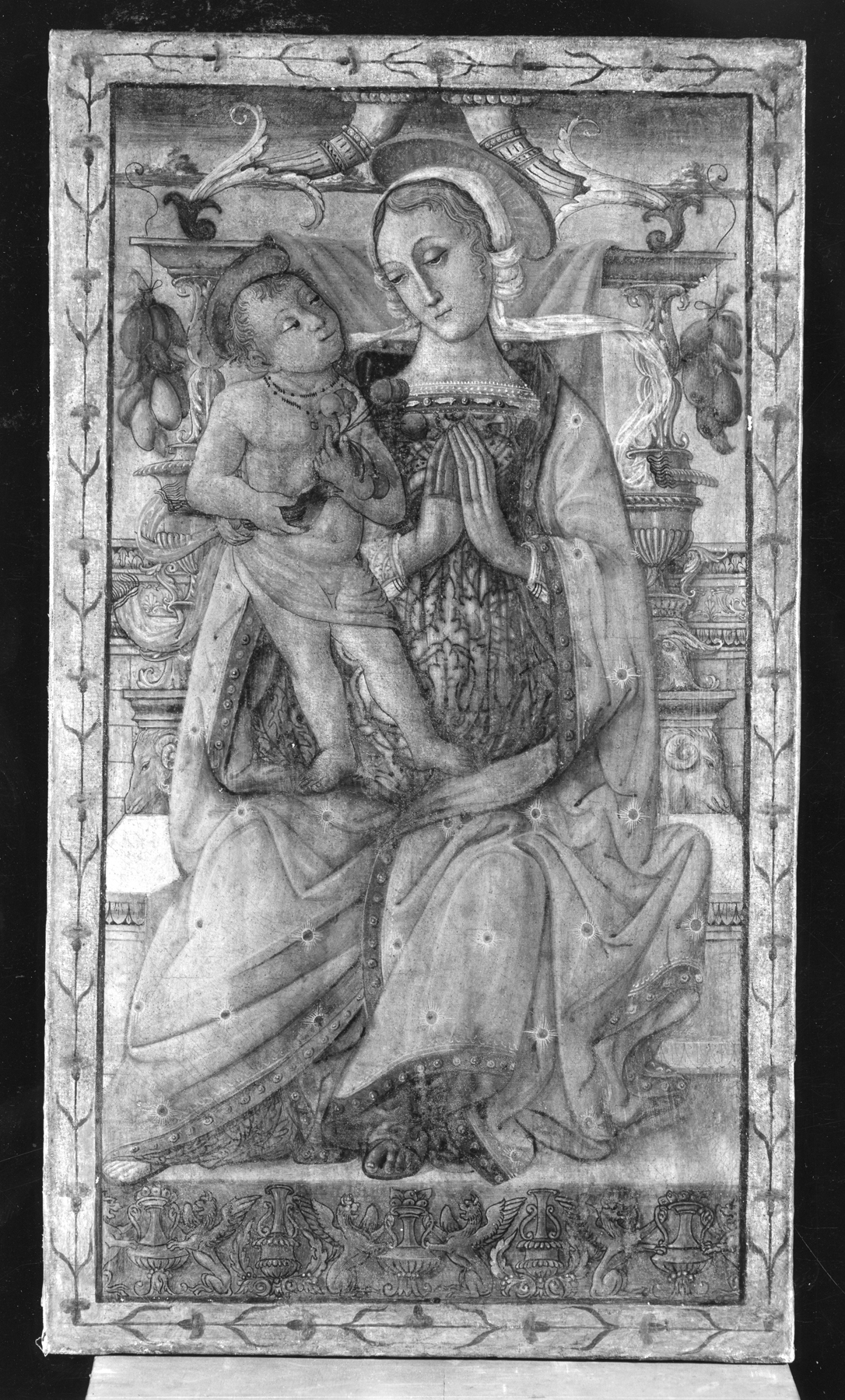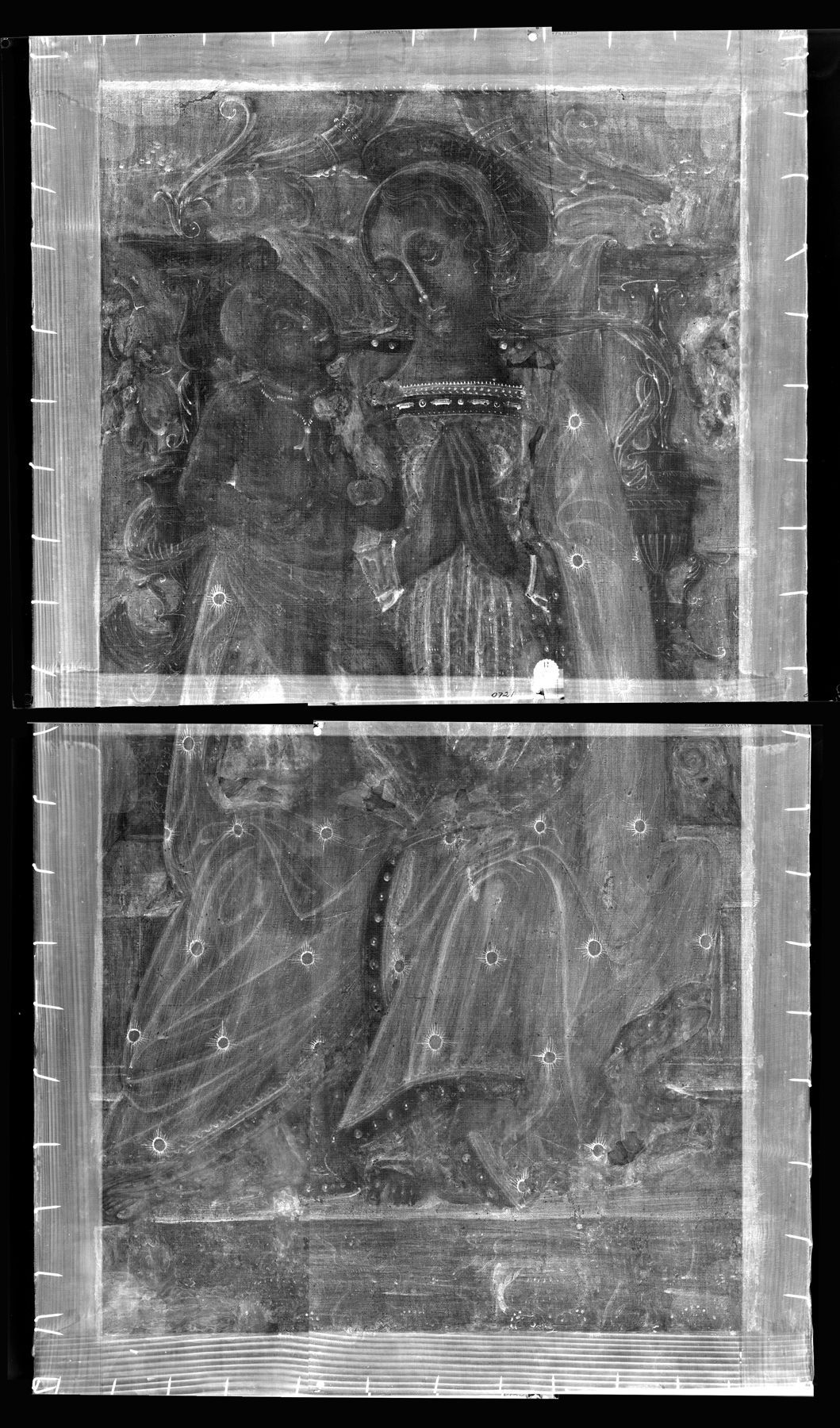Madonna and Child Enthroned
(Renaissance Europe )
The Madonna sits on an elaborate marble throne decorated with elements derived from ancient Roman sculpture, such as the cornucopias along its top, the ram heads on the seat, and griffins at the base. With her hands joined in prayer, she looks toward the Christ Child, who stands on her lap holding a sprig of cherries, symbols of paradise on account of their sweetness. The bushels of plums attached to the upper corners of the throne are symbols of fidelity while the carnations lining the painting’s border allude to the Madonna’s love and purity.
Since it was executed on linen instead of wood (the more common support for paintings during the period), the painting was probably intended as a banner to be carried in religious processions. The elongated and contoured forms are typical of Matteo da Gualdo, who worked primarily in his native Gualdo Tadino, a remote hill town in the region of Umbria in central Italy. Matteo may have been trained by Bartolomeo di Tommaso da Foligno, represented by two paintings at the Walters (37.456 and 37.712).
Provenance
Provenance (from the French provenir, 'to come from/forth') is the chronology of the ownership, custody, or location of a historical object.
Don Marcello Massarenti Collection, Rome [date and mode of acquisition unknown] [1897 catalogue: no. 324, as Matteo da Siena]; Henry Walters, Baltimore, 1902, by purchase; Walters Art Museum, 1931, by bequest.
Conservation
| Date | Description | Narrative |
|---|---|---|
| 7/3/1968 | Examination | examined for technical study |
Geographies
Italy, Umbria (Place of Origin)
Measurements
Painted surface H including floral border: 34 3/4 x W: 19 7/16 in. (88.3 x 49.4 cm)
Credit Line
Acquired by Henry Walters with the Massarenti Collection, 1902
Location in Museum
Not on view
Accession Number
In libraries, galleries, museums, and archives, an accession number is a unique identifier assigned to each object in the collection.
In libraries, galleries, museums, and archives, an accession number is a unique identifier assigned to each object in the collection.
37.691




